Resistant late maturing hybrid of valentine cabbage f1
Valentina F1 is a hybrid of late-ripening white cabbage. It gives a rich harvest of delicious heads of cabbage, which are stored for a long time and are universal in use. The culture is resistant to common diseases and frost.
Consider how to properly grow a hybrid and care for it.
The content of the article
Description of hybrid cabbage Valentine F1
The hybrid is characterized by unpretentiousness in growing, the shelf life of heads of cabbage is up to 7 months. Vegetables form firm and rarely crack with proper care.
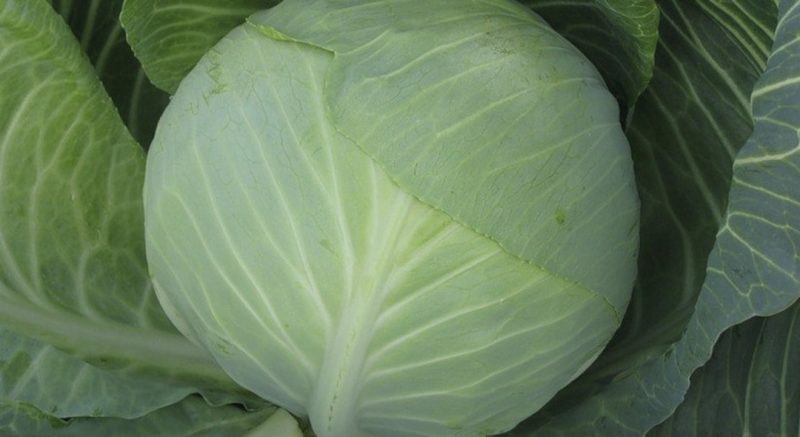
Origin and development
Productivity and the possibility of growing the hybrid in many climatic zones have been proven by trial tests. In 2004 it was included in the State Register of Russia.
Cabbage was brought out in Moscow, at the "NN Timofeev Breeding Station". The authors of the hybrid are Kryuchkov A.V., Paturia J.V., Monakhos G.F.
Chemical composition and useful properties
Cabbage contains a lot of vitamins and minerals. Basic:
- vitamins C, B1, B2, B4, B5, B6, B9, PP, K, U;
- silicon;
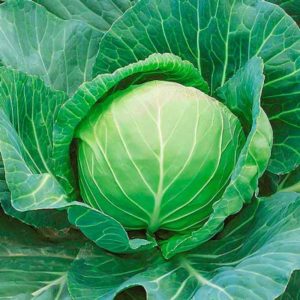
- manganese;
- potassium;
- calcium;
- iron;
- iodine;
- boron;
- phosphorus;
- sodium.
Beneficial features:
- stabilization of the gastrointestinal tract;
- reduction of inflammatory processes;
- regulation of blood cholesterol levels;
- prevention of atherosclerosis;
- elimination of toxins;
- normalization of the cardiovascular system;
- weight loss (the calorie content of cabbage is 24 kcal per 100 g).
The vegetable is forbidden to be consumed by people suffering from chronic gastrointestinal diseases, colic and pancreatitis, especially with their exacerbation.
Application features
Cabbage is suitable for consumption both fresh and after heat treatment. Heads of cabbage are suitable for preservation, pickling, stored until a new harvest.
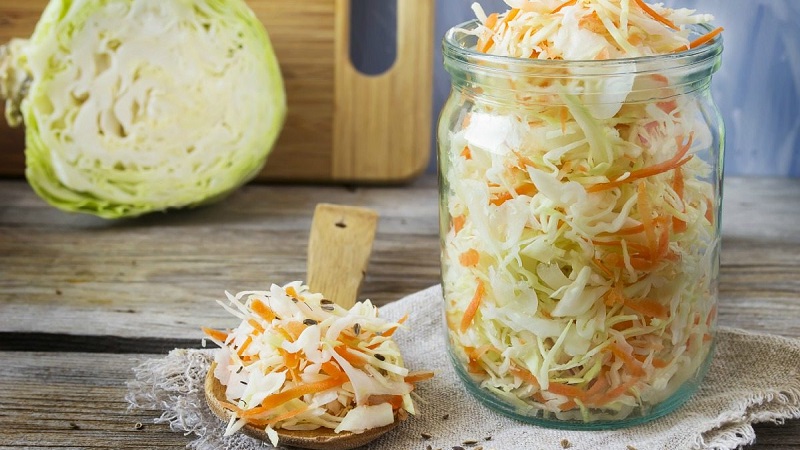
Ripening period and yield
This is a late ripening hybrid. Ripening period - from 140 to 180 days. 680-800 centners of vegetables are obtained from 1 hectare.
Resistance to disease and cold
The hybrid is resistant to black leg, Alternaria, white and gray rot, vascular bacteriosis, Fusarium.
Mature plants withstand frost up to -8 ° C, seedlings - up to -3 ° C.
Characteristics of Valentine cabbage
The heads of the hybrid are large, round and dense, weighing 3.2-3.8 kg each. The stump is white, the outer one is medium, the inner one is short. Raised leaf type rosette. The leaves are slightly wavy at the edges, pale green and dark green, covered with a pronounced waxy bloom.
Reference! Cabbage initially has a bitter taste, but it completely disappears during storage. Heads of cabbage are best consumed after three months in storage. During this time, they will become tender, juicy and sweet, without coarse veins.
Vegetables retain their taste and marketability for up to 7 months, withstand transportation well, do not crack.
Which regions is best suited for
The hybrid is suitable for growing in the Volga region, Siberia, the Urals and the Far East, in the North, North-West, Central, Central black earth and North Caucasus regions of Russia. Undemanding to growing conditions.
Main advantages and disadvantages
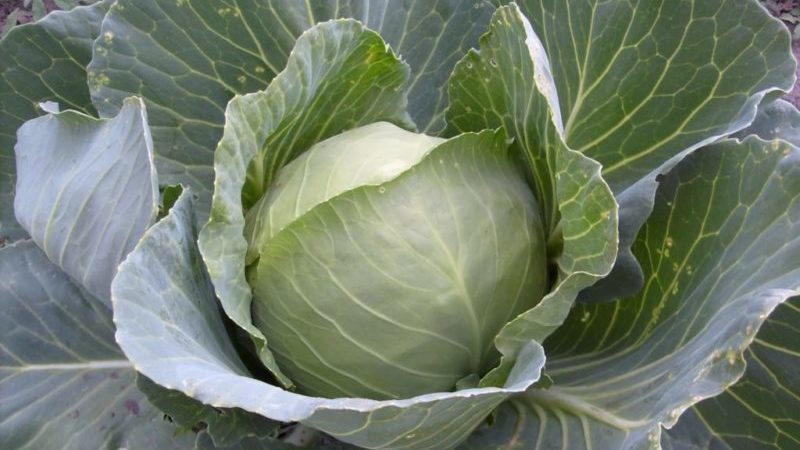
Hybrid advantages:
- frost resistance;
- high yield rates;
- long shelf life of the crop;
- the strength of the heads of cabbage;
- resistance to black leg, alternaria, white and gray rot, vascular bacteriosis, fusarium;
- the strength of the fork due to the short leg;
- universality of application.
Disadvantages:
- exactingness to the soil: grows on loam and peat;
- intolerance to frequent watering and heat;
- photophilousness.
Differences from other varieties and hybrids
Features of the hybrid - 90% yield of marketable products, frost resistance, long-term storage of the crop. If other types of cabbage are ready to eat immediately after harvest, then Valentine requires aging.
Features of planting and growing
The quality of the crop depends on the timing of planting, competent soil preparation, and subsequent care.
Preparing for landing
The hybrid is grown in seedlings. The date of sowing the seeds is chosen such that the seedlings are 35 days old before being transferred to open ground. The manufacturer of the planting material is taken into account: it is better to give preference to well-known companies.
Step-by-step seed preparation:
- Healthy seeds are pre-selected. For this, the material is placed in cold water. Floated specimens are removed as they will not sprout.
- The seeds are placed in a humate solution (preparation strictly according to the manufacturer's instructions) for 12 hours, then they are hardened at a temperature of + 1 ° C. This is how they are stimulated to intensive germination, and cold resistance increases.
Suitable soil mixture options: 3 kg of peat, 1 kg of sod soil, 300 g of river sand or 2 kg of humus, 2 kg of sod land, 200 g of sand.
Seedling containers are taken general or individual at once. A complex fertilizer is added to the soil (for example, "Purshat-M"), everything is well moistened. Distribute the seeds evenly, sprinkle them with a 1 cm layer of earth. Moisten from a spray bottle. Cover with plastic or glass and put in a warm place.
Attention! The normal length of daylight hours for cabbage is 12 hours. Therefore, it is advisable to supplement the seedlings. This will help avoid pulling the plants.
Shoots will appear in 5 days. The shelter is removed, and the container is placed in a well-lit place.
Seedling preparation
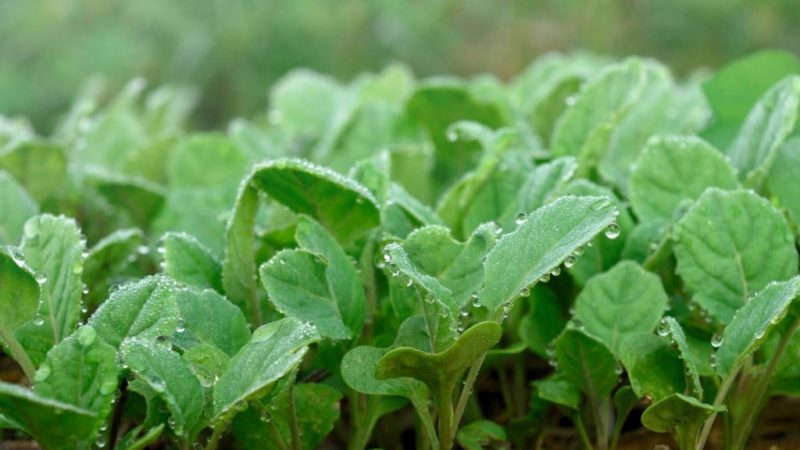
In 15 days after emergence, healthy plants form 2 leaves each. If the seeds were planted in one container, they start picking. For this, cabbage is transplanted into spacious peat pots or plastic cups. 2-3 days before the procedure, the seedlings are well watered.
Each plant is taken together with a lump of earth, 1/3 of the main root is removed so that the root system grows. Buried in the prepared soil mixture to cotyledon leaves. The composition of the soil is identical to the seed mixture.
Advice! After picking, the plants are watered only after 5-6 days. As a result, lateral roots will grow, and the cut will not rot.
Cabbage is planted in open ground in early May. The dimensions of the holes are 30x30 cm, the distance between them is 50 cm, between the rows - 70 cm. Soil preparation and subsequent care are the same as in the seedless method.
How to make a seedless plant
This method is used by experienced gardeners. There are much more requirements here than the reckless method.
Ground requirements
The following factors are taken into account:
- Cabbage grows well on loose, moist and fertile, neutral or slightly alkaline soil.
- The heavy and acidic earth is preliminarily improved to pH 7. For this, 2 tbsp. regular chalk or dolomite flour per 1 m2 plot. Add a bucket of humus or compost for every 1 m2.
- Dig the earth well on the bayonet of the shovel. Be sure to remove all weeds, pest larvae.
- Cover with dark cloth before planting seeds or seedlings.
- If the cabbage is grown in a greenhouse, the ground is prepared according to the same principle, but additionally add 1 liter of furnace ash per 1 m2.
It is forbidden to add fresh manure to the soil: mature cabbage will absorb bitterness, become infected with various diseases, and attract insects.
Predecessors
Good crop precursors are potatoes, cucumbers, tomatoes, onions.
Can't grow Valentina after radish, radish, swede, turnips, horseradish, carrots, zucchini, pumpkin, other hybrids and varieties of cabbage (permissible once every 4 years).
Timing, scheme and landing rules
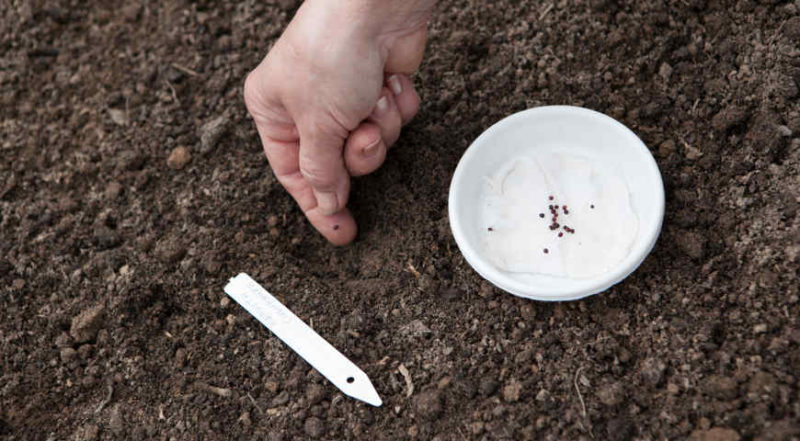
Seeds are sown in early or mid-April - early May. Soil temperature should be + 6 ° C, air temperature - + 10 ° C.
The seeds are arranged in rows. The distance between plants should be 1.5–2 cm, between grooves - 2 cm, depth - 1–1.5 cm. Place 2-3 grains in each hole. After germination, only 1 strong plant is left.
Growing features
The recommendations are as follows:
- at first, the ridge is covered with a dense film;
- on warm days, the material is slightly opened;
- follow the rules of care;
- provide at least 12 hours of daylight hours;
- for better plant development, a heating system is installed in the greenhouse.
The nuances of care
Regardless of the chosen method of planting cabbage, there are uniform care rules. They include adherence to the watering regime, hilling, pest and disease control, and top dressing.
Watering mode
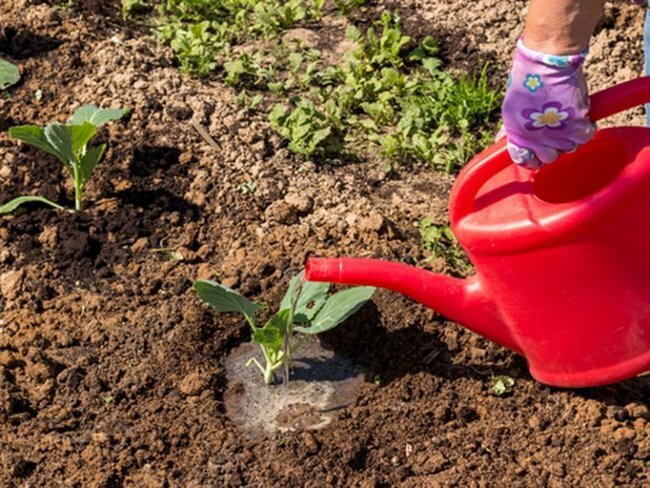
Tips:
- water the cabbage 2 times a day in the heat, in the rainy season, irrigation is excluded;
- moisturize plants only in the morning or in the evening with warm water, consumption - 20 liters per 1 m2 plot in sunny weather, 15 l - in cloudy;
- do not allow stagnant water and drying out of the soil.
Watering is completely stopped a month before harvesting, in hot summer - 20 days. This will prevent the heads from cracking.
Loosening and hilling
The soil is loosened to a depth of 6 cm after each wetting. Hilling is required 2 times for the entire period of crop growth. The first procedure is performed 7 days after planting in open ground, the second - during the formation of heads of cabbage.
Top dressing
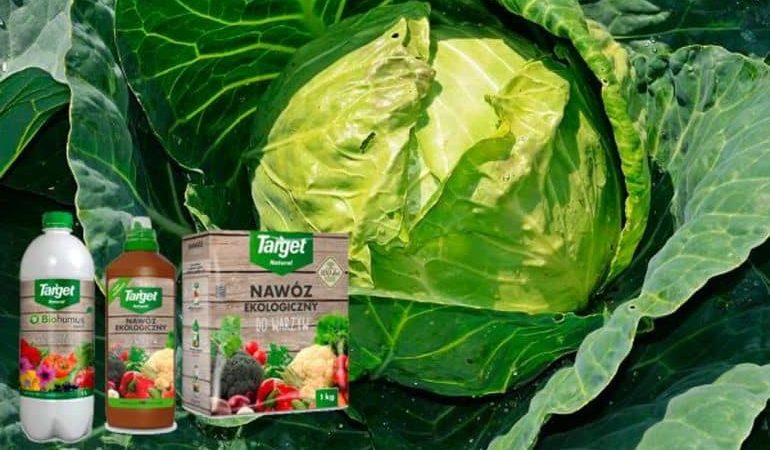
The hybrid requires 4 feeding per season:
- 2 weeks after planting in open ground. To do this, dilute 0.5 liters of poultry manure or cow dung in 10 liters of water. Introduce 0.5 liters for each bush. Mineral agent: dilute 10 g of urea, 20 g of superphosphate, 10 g of potassium monophosphate in 10 liters of water. The expense is the same.
- 2 weeks after the first fertilization, 0.5 l of poultry manure is diluted in 10 l of water, 1 l is poured under each plant.
- 20 days after dissolve 15 g of potassium monophosphate and 0.5 l of cow dung in 10 l of water. Consumption - 1.5 l of the mixture per plant.
- After 3 weeks, top dressing is applied according to the previous scheme.
Cabbage Valentina F1 is very fond of organic fertilizing, but when using one type of fertilizer, it is not recommended to apply others. If organic is used, then mineral is excluded.
Measures to increase the yield
Complex fertilizers will help to increase the yield. Use them strictly according to the instructions.
Organic substitutes: Biud, Bucephalus, Kaury, mineral substitutes: Hera, Cabbage, Agricola, Kaliyphos-N.
Disease and pest control
The hybrid is resistant to all types of diseases, but is often affected by apical rot. The disease is provoked by cabbage fly larvae. Signs - the dying off of the upper leaves, the defeat of neighboring crops. For prevention, control the amount of dressings, exclude nitrogen fertilizers, and destroy pests in a timely manner. For treatment, add 300 g of phosphoric flour per 1 m2 the area around the plants is treated with tobacco dust.
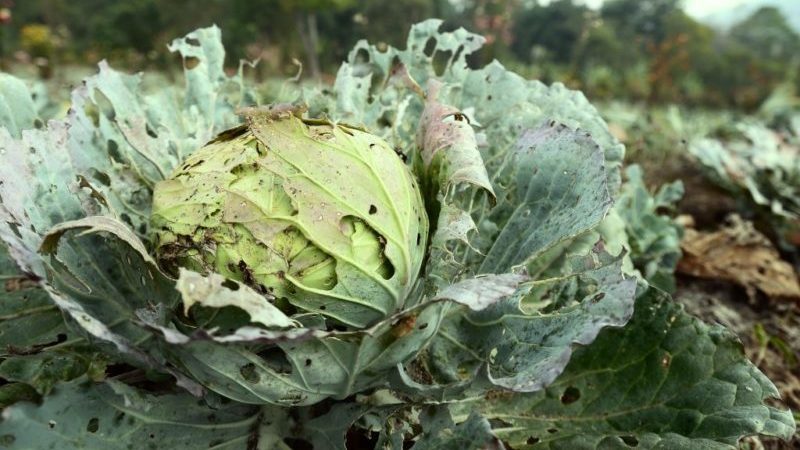
Pests:
- Cruciferous flea. The signs are holes in the leaves and complete destruction of the foliage. Insecticides are used against insects: "Aktellik", "Bankol", "Karate", "Decis", "Bi-58". Diluted according to the instructions.
- White butterfly. Signs are carved leaves, pupae on nearby tree trunks and fences. Struggle - manual collection of caterpillars, use of Iskra DE (1 tablet is diluted in 10 liters of water).
- Slug. Signs - blackening of the stem and leaves, death of plants. Fighting - manual collection, 12% solution of hexachlorane under the root according to the instructions.
- Cabbage fly... Signs - wilting of plants due to damage to the roots of small white worms. To combat, use a 12% solution of hexachlorane under the roots strictly according to the instructions.
- Scoop. Signs are large leaves eaten. Wrestling - manual collection of larvae, use of the drug "Karate Zeon".
Harvesting and storage
The crop is harvested in mid-October, in clear and dry weather, at one time. Ripe heads of cabbage are cut with a knife or pulled out by the roots. Leave the stump 5 cm long and the lower leaves.
Store vegetables on racks at 0 ° C, humidity 90%. For 7 months the heads of cabbage do not lose their commercial qualities, and over time they only become tastier and juicier.
Possible growing difficulties
There are no particular difficulties in growing a hybrid.
Planting and care patterns are similar to those for growing other varieties of cabbage.
Advice and feedback from experienced gardeners
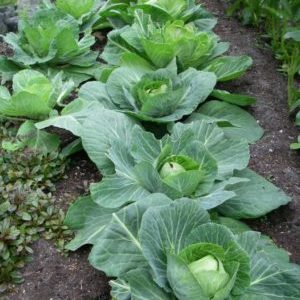
Experienced gardeners follow some tricks:
- The roots are chopped up with a shovel or the head of cabbage is slightly rolled in the ground until the roots crunch. This will weaken the flow of juices from the roots to the leaves so that the heads of cabbage do not crack.
- Do not pick off the lower leaves. Only yellow and dried ones are removed.
- In case of frost, when they begin to harvest, they do not separate the head of cabbage from the roots. This eliminates the formation of layers of dry and wet leaves. Better to wait for warm weather and dig up the plant.
Reviews of gardeners about Valentine F1 cabbage:
Natalia, Novosibirsk: “This is a great hybrid with excellent keeping quality. Juicy and sweet cabbage for the entire storage period does not lose its taste. I recommend wrapping cabbage heads for the winter. "
Anastasia, Ufa: “Valentine's cabbage is a hybrid, not a variety that I liked very much for its high yield. The heads of cabbage turned out to be dense and juicy, did not deteriorate over the winter. Soon to reap a new crop, but the old one is still lying. "
It is interesting:
An early ripe hybrid of Krautkaiser F1 cabbage, suitable for long-term storage
Simple and delicious recipes for making sauerkraut with vinegar
Conclusion
Valentina f1 cabbage is a stable late-ripening hybrid with a high yield. Growing this culture is easy if you follow the basic rules of care. The main thing is to prepare healthy seedlings, choose the right site, fertilize the land, not overmoisten the plantings and fight pests in a timely manner.